#caribs
Text
Did the Caribs eat the Taino’s?
So someone I don’t like created a video and they only mentioned the Taino people for about 10 seconds and in those ten seconds they mentioned how the Taino people were “thankful” when Christopher Columbus showed up because he saved them from the Kalinago tribe or more specifically the (Caribs) because HE reported the Kalinago and the Taino were at “war” with each other and the Kalinago people “ate” the Taino’s and also kept them as slaves.
I’m a bit too tired to clean my ears after hearing all of that bullshit, so consider this a sneak preview to a post I’ll create in a few days time.
...
There’s not enough data to support the claim the Kalinago’s ate the Taino’s. According to Christopher, anyone he didn’t like he labeled as the Caribs. Just like the Taino, there’s so little information we know about the Kalinago because someone, not pointing at anyone in particular, killed so many of those people and destroyed so much of their history that what information we do know about them, came from a guy who’s less smarter than a fifth grader.
The overall idea of indigenous people eating others came from one guy who didn’t see them as people but instead as savages, barley even humans.
Here’s a quick history check for you. If you’re going to mentioned history, more specifically Taino history, at least get the names of the tribes right so you don’t look like an idiot before you even open your mouth.
Caribs, and Taino are broad terms. Why do people such as myself call myself Taino when I should be calling myself Arawak? Short answer, there’s so little information for just the Arawak people that most, if not all of it get’s put under the Taino umbrella anyway. It’s much easier to find other Taino people than it is to find just the Arawak people.
Moving on, there was several tribes in the Caribbean, such as the Kalinago and the Arawak being the biggest. However when Christopher came by, and killed nearley everyone, all of our culture and history became so sparse everyone joined together under the Taino umbrella.
If you google “What are the indigenous people of the Caribbean called?” You’re probably going to get Taino. It might also mentioned that the Taino came from places such as Jamaica, and Hispaniola, which doesn’t make sense, seeing how other people think the Kalinago, (Cairbs) were the inhabitants of Jamaica and Hispaniola as well, so which one is it?
Taino people also came from Cuba, Puerto Rico, Haitai, you get the picture. We came from every part of the Caribbean but if we came from every part of the Caribbean, why were we fighting amongst ourselves?
Just like Australia, if you’re going to mention infighting with the Aboriginal people, when talking about history, do some research and point out the tribes you’re talking about because the term Aboriginal, is just an umbrella term used to describe all of the indigenous people in Australia, not just one tribe.
So before you even think about mentioning how the Taino people were “thankful” for Christopher for helping them with the Caribs, perhaps you should figure out the name of the tribes you’re talking about before it becomes evident the shit that comes out of your mouth is flavoured with lies and deception.
#taino#puerto rico#kalinago#caribs#savages#disney#christopher columbus#arawak#australia#aboriginal#indigenous#caribbean#candace owens
6 notes
·
View notes
Text
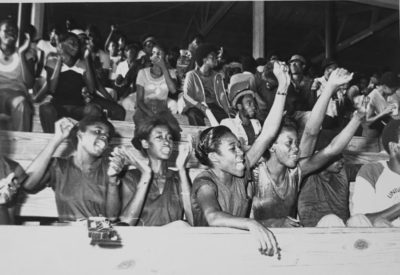
Women take the lead during the Revo’. This successful part of the Revolution continues today
Before its sighting in 1498 by that well-known charity benefactor, Christopher Columbus, Grenada was inhabited by the Caribs, who had invaded and killed the previous inhabitant, the Arawaks. The name given to Grenada by the Arawaks was believed to be Ciboney. The Caribs resisted European domination for more than one hundred years after being sighted by Columbus.
From the earliest European settlement in Grenada, enslaved Africans were kidnapped to Grenada. Contrary to popular Western culture the Africans resisted their capture. In Grenada, this manifested in numerous revolts, including the Fédon rebellion of March 1795.
Fédon was influenced by the ideas emerging from the French Revolution, especially the Convention’s abolition of slavery in 1794. Fédon stated that he intended to make Grenada a “Black Republic just like Haiti”. Fédon and his revolutionaries controlled most of Grenada between 1795 and June 1796. Over 14,000 of Grenada’s 28,000 enslaved Africans joined the revolutionary forces in order to write their own emancipation and transform themselves into “citizens”. However, more than 7,000 of these freedom fighters perished in the fight for independence.
Although enslavement was “abolished” in 1834 the plight of Grenada’s African population remained relatively unchanged until the 1951 “revolution” of Eric Gairy. Gairy had limited success in weakening the control that Britain had over the island, leading to independence in February 1974. Independence under Gairy was, for the people of Grenada, a mirage as Gairy did not have the ability or vision to take the people beyond the fight for independence.
Notwithstanding his incompetence, Gairy tried to retain power despite his loss of popularity. He used extreme violence to keep control but was overthrown by a popular revolution on 13 March 1979 by the New Jewel Movement (NJM), led by Maurice Bishop.
The Peoples Revolutionary Government formed after the Revolution (Revo’) embarked on a wide-ranging series of social, economic and educational plans, which brought great and tangible benefits to the people of Grenada.
In 1983 tensions within the NJM led to the collapse of the Revo’, culminating in the killing of Maurice Bishop and others close to him on 19 October of that year. The United States, which had, under Reagan, attempted on numerous occasions to undermine the Revo’, used this opportunity to invade Grenada. After a week of heavy fighting the US forces, with a fig-leaf Caribbean contingent, captured Grenada and set about dismantling the gains of the Revo’.
Their first act was to put on a show trial of the remaining leader of the NJM, the Grenada 17, who they captured following the invasion. Mounting a sustained campaign, led by their 56th US Psychological Warfare Unit, the invaders claimed that these leaders had stolen money from the Treasury; planned to slaughter all Grenadians; sold Grenada to Cuba; built underground cities for Soviet Union troops, who were to be stationed in the country; and who killed Maurice Bishop.
The Psychological Warfare Unit co-opted local and regional figures to manage the “trial”, which despite was notorious for its many blatant irregularities and received many justified complaints, convicted the leaders of murder and sentenced them to death. This was condemned worldwide by numerous organisations including Amnesty International and was declared a “…travesty of justice…” by many others. After an intense campaign, the death sentences were counted and replaced by life imprisonment.
The Grenada 17 were released following a global campaign.
Grenada – Forward Ever (G-FE) was formed in 2018.
It recognises the tremendous social, economic and educational progress made by the Grenadian people during the Revolution of 1979. The United States invaded Grenada in 1983 to quash these gains and erase its memory from history. We will oppose this plan and fight against all forms of colonialism and support the struggle for self-determination by oppressed people.
We will assist organisations and individuals in Grenada and elsewhere, seeking to advance the material, economic, social and general well-being of the people of Grenada in support of the advances made during the Revolution.
We will do this by: –
Publishing and disseminating information and materials, with a focus on the history and inheritance of the Grenada Revolution.
Undertaking research,
Holding events, and
Lobbying, canvassing and commissioning any other activity.
The Grenada Revolution – An overview
A new document, THE GRENADA REVOLUTION – Four years of freedom – Achievements, Challenges and Collapse, has been published and is now available for downloading.
This document provides a summary of the momentous events that occurred in Grenada between the Revolution (Revo’) of 13 March 1979 and the US invasion of October 1983. It covers, in outline, the history of Grenada, the preparation and planning of the Revolution, the successes of the Revolution, its collapse, the US invasion and the lessons that can be learned from its collapse.
THE GRENADA REVOLUTION – Four years of freedom … can be opened from 2021 11 02 – THE GRENADA REVOLUTION Four years of freedom Achievements, Challenges and Collapse.
By Our Own Hands – A People’s History of the Grenadian Revolution

A pamphlet from CLS by Steve Cushion and Dennis Bartholomew
Published by Caribbean Labour Solidarity, By Our Own Hands… illustrates the tremendous strides made by the people of Grenada during the brief period of the revolution.
Between 1979 and 1983, the people of the Caribbean nation of Grenada made a courageous attempt to overcome the legacy of slavery, British colonialism and a viciously corrupt post-colonial dictatorship.
The tragic last few days of the Revolution have obscured the remarkable achievements of the Grenadian people during the previous four years. In the face of the unceasing hostility of the United States government and its continual destabilisation campaign, the people of Grenada rebuilt their economy with an emphasis on social justice and economic stability rather than mere profit for, mainly foreign, capitalists; they established a remarkable education system and improved their health service; they started a house-building and housing repair programme that addressed the needs of the poorest members of society.
By Our Own Hands… can be downloaded from the bottom of this page http://cls-uk.org.uk/?p=279.
#Grenada – Forward Ever#Grenada#Women#revolutionaries#By Our Own Hands – A People’s History of the Grenadian Revolution#caribbean women#caribbean#caribs#arawaks#maroons#enslaved
1 note
·
View note
Text
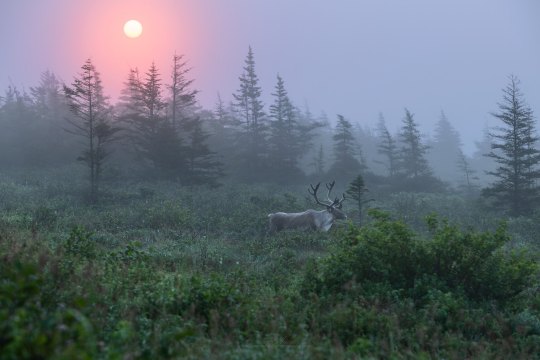

by Brad James
#landscape#nature#animals#fog#sunrise#mist#caribou#wildlife#meadow#aesthetic#trees#curators on tumblr#naturecore#uploads
3K notes
·
View notes
Photo

In the depths of winter, I finally learned that within me there lay an invincible summer
12K notes
·
View notes
Text
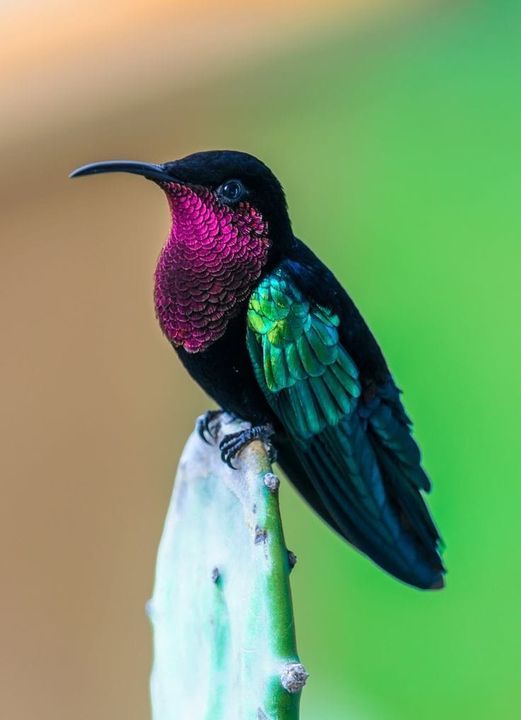
Purple-throated Carib (Eulampis jugularis), male, family Trochilidae, order Apodiformes, Martinique
photograph by Vincent Peixoto
821 notes
·
View notes
Photo

Sarvekas
4K notes
·
View notes
Text

Bob Kuhn (1920–2007), At the Edge of the Boreal Forest, acrylic on board.
Coeur d’Alene Art Auction
747 notes
·
View notes
Text

Khalym Kari Burke-Thomas, from ‘Carib Woman, 1818′
3K notes
·
View notes
Text
Let’s talk about slavery with the Taino people
On July 22nd I created a post called “Did the Caribs eat the Taino’s?” and the TLDR version is...no...they didn’t. However I did state I would return to this so here I am.
If you would like to read the first post, you can do it here: Did the Caribs eat the Taino people?
There was a video and it mentioned briefly that the Taino’s were “saved” by Christopher Columbus from the Caribs (Kalinago) who were taking the Taino’s as slaves and the thing about all of this is that Christopher was the one doing the actually slavery. (Shocker, I know)
Now before I begin, there’s a lot of history with just Chirspooper alone that I honestly can’t cover it all in a single Tumblr post and while I love talking about my people, doing these kind of long post takes a lot out of me so if you have specific questions please let me know. I’m not an expert on the Taino way of life, I’m still learning myself, but I do know a few things and would be more than happy to answer any questions you may have. So with that out of the way, let’s talk about Chrispoopy and slavery.
It wasn’t supposed to be like this
That’s how it starts and the first thing people say when a good deal goes bad. You see when Chrisdick came over, we welcomed him, unlike the Kalinago who hated him which resulted in misinformation about them because someone got their feelings hurt.
We had no idea who these people were, we had no reason to be hostile. They came on massive boats, were fully clothed, the were interesting so we did what was common in our society, gave them stuff like silver and gold. Why did we gave them silver and gold? We had no need for it. We lived off the island, we hunt, swam, slept outside, we had no desire for silver and gold. We didn’t had an economy and we didn’t had the tools to make the types of weapons or armour the Spaniards had so we just gave them the stuff.
Not only did we gave them silver and gold, we also gave them our woman and virgins. It was to help with relations. Our woman would go with them to this new land, and return us with information, new families, and wonders of the outside...that never happened. Giving the Spaniards silver, gold, and woman, was all in the hopes they would give us something in return, but the only thing they gave was diseases that made everyone sick. They took, and took, and took, and then they left.
When we refused to give them anymore, that’s when things got violent. They pillage our village’s, killed the strongest and told the weak to go digging for more silver and gold. That was when the slavery began, when we didn’t want to give anymore, they decided to take instead.
How could we stop them? They had guns and we had spears and arrows. They made us sick and we couldn’t fight back. They already won the war before it started.
Why do you think Puerto Rico is called Puerto Rico? It literally translates to “Port of Riches” because of how rich it made the Spaniards. Once they were done being rich and taking from our land, they took us instead so we could work for them. An estimated 7-8 million Taino people died in just a few decades. They left the weak alone which is one of the reasons why we’re alive today and why I have Spaniard blood in me.
Some Spaniard sexually assaulted one of my ancestors, left her on Puerto Rico and she gave birth.
In short, Chis the killer did not “saved” the Taino’s from the Kalinago. He killed both of us, and wrote himself as the hero in reality he was always just a loser with a big gun.
4 notes
·
View notes
Text

White Reindeer, Norway by Till Daling
#reindeer#caribou#norway#white reindeer#white deer#nature#photography#green#plants#landscape#rocks#moss#nature photography#mountains#animals#1k
5K notes
·
View notes
Text
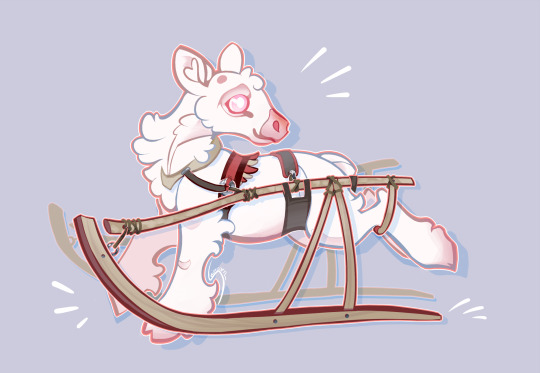
Keep an eye on the sky for the arrival of the Reindeer Days team!
I'm so happy you could join me in welcoming my friends from the north pole! We spend all four seasons getting ready for our Christmas Eve journey, which is my favorite flight of the year.
I love the night trips the best, because the stars don't sunburn my nose. But I still join any time there's long distance travel, because everyone has a gift they bring to help the whole team come together.
Some are fast, some are strong, some are smart, some caring, and some (like me) just really love geography! I plan our routes and navigate to make sure we reach every house on our list before the night is up. I hope you'll leave some carrots out for us on the roof!
See you tonight, and Merry Christmas!
Redbubble (buy reindeer swag) || Etsy (sticker sets)
Patreon (see WIPs and more) || Ko-fi (donate carrots)
#artists on tumblr#reindeer#christmas#santa's reindeer#caribou#reindeer character design#christmas reindeer#character design#shire draws#caribou character design#antlers#reindeer days#reindeer games#poll#deer#deerish#yes that is a wheelchair sleigh#he uses it to get around!
638 notes
·
View notes
Text

Cozy portrait commission!
924 notes
·
View notes
Text
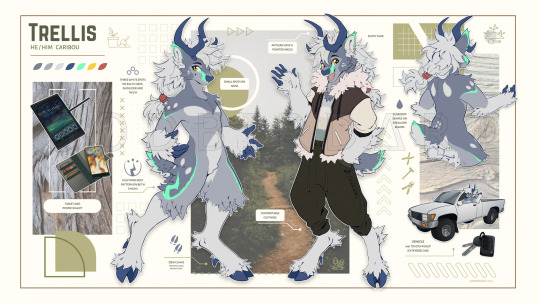
「 commission 」 reference sheet for @flakealso 🌲
#flakealso#trellis#furry#anthro#commissions#godbirdart#godbird#2023#november#art#reference sheet#ref sheet#caribou
567 notes
·
View notes
Text
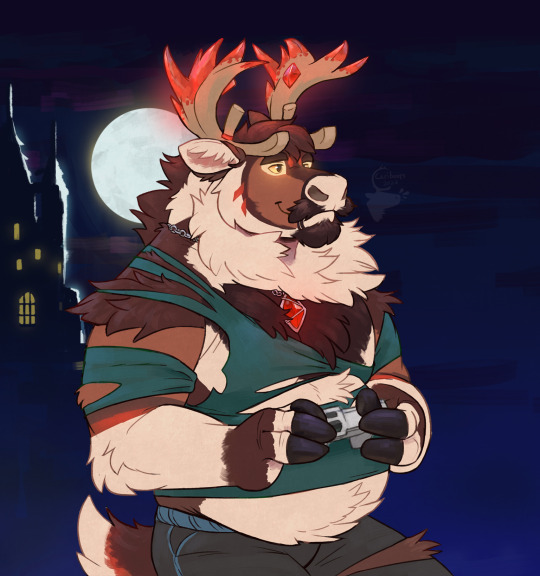
What a terriboul night to have a curse... Happy Halloween, everyone! I was a werebou for a stream I did the other night! The video is still up on my channel if you'd like to see me play Castlevania here: www.twitch.tv/cariboops
605 notes
·
View notes
Text
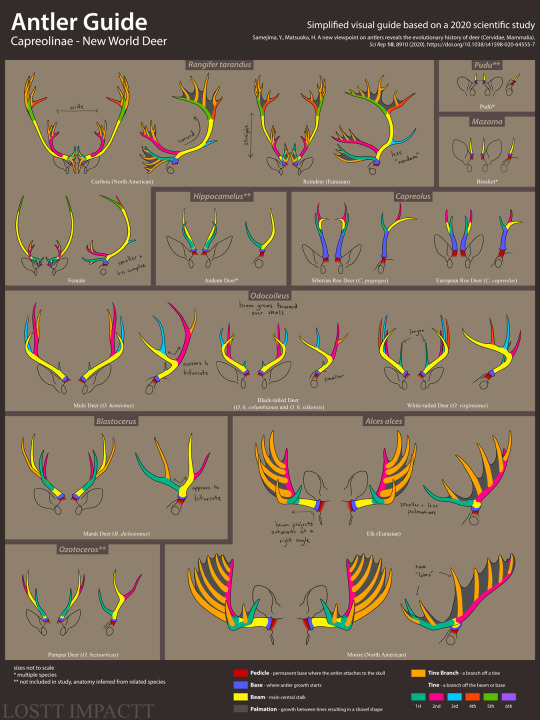

A new viewpoint on antlers reveals the evolutionary history of deer (Cervidae, Mammalia)
fullview recommended!
something i've wanted to do for a while now. i've scoured the internet for something like this and can't find anything that compares all the different types of antlers together. except one recent study on their evolution, which is also very interesting on its own! i simplified it to provide a visual reference, while still trying to be scientifically accurate. some things differ between this and trophy scoring terminology like where the beam is and whatnot, so if something looks weird that's why.
small additional note, this study and others provide a lot of evidence that eld's deer should be in their own genus as it doesn't appear similar enough to barasingha and schomburgk's deer. however this doesn't seem to be adapted anywhere yet, so they're still in Rucervus for this guide.
🔴 KO-FI
⚫ COMMISSION INFO
#art#deer#cervid#cervidae#cervine#reference#educational#infographic#antlers#caribou#reindeer#pudu#brocket#taruca#huemul#roe deer#mule deer#black tailed deer#white tailed deer#moose#elk#wapiti#marsh deer#pampas deer#pere david's deer#milu#philippine deer#sambar#javan deer#javan rusa
810 notes
·
View notes